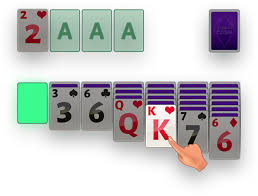Exploring the Major Currency Pairs: What Every Trader Should Know
Mastering the dynamics of major currency pairs is essential in Forex trading. These pairs represent the most traded currencies worldwide, offering liquidity and numerous opportunities for traders. Understanding these pairs equips you with the necessary tools to navigate the Forex market effectively.
The Big Four: A Snapshot
- EUR/USD (Euro/US Dollar): Known as the “Fiber,” this pair is the most traded globally. Economic indicators from the Eurozone and the United States influence its movements.
- USD/JPY (US Dollar/Japanese Yen): Termed the “Gopher,” this pair denotes how many yen can purchase one US dollar. It is highly sensitive to Japanese corporate and investor sentiment.
- GBP/USD (British Pound/US Dollar): This pair, also known as the “Cable,” is preferred by traders due to its volatility and the UK’s economic stability.
- USD/CHF (US Dollar/Swiss Franc): Known as the “Swissie,” this pair is a gauge of global stability and risk sentiment.
Understanding the Influence of Economic Indicators
Economic reports such as GDP growth, unemployment rates, and central bank decisions profoundly impact currency values. For instance, if the US Federal Reserve raises interest rates, the USD typically strengthens. Traders in the trading academy learn to anticipate such movements through fundamental analysis, enhancing their trading strategies.
The Role of Technical Analysis
While fundamental analysis looks at economic indicators, technical analysis focuses on price movements and patterns. Using tools like Fibonacci retracement or moving averages, traders can predict future price actions. This technical know-how tool offers a structured approach to learning these techniques, ensuring that traders can leverage these tools to their advantage.
Trading Strategies for Major Pairs
Developing a trading strategy is crucial. Whether it’s day trading or swing trading, understanding the market’s pulse allows traders to make informed decisions. Here are a few strategies:
- Trend Following: Traders identify the direction of the market’s trend and make trades based on its continuation.
- Range Trading: Involves identifying stable high and low prices at which to buy or sell.
- Position Trading: Long-term strategy based on large economic trends.
Each strategy requires a thorough understanding of market conditions and an ability to adapt to sudden changes.
Risk Management
Effective risk management is critical. Setting stop-loss orders, monitoring leverage, and understanding market volatility can help mitigate losses. It’s about making calculated moves and knowing when to exit a position to protect your capital.
Continuous Learning and Adaptation
In addition to mastering trading strategies and risk management, continuous education for forex lessons for beginners plays a pivotal role in a trader’s success. Markets evolve, and so should a trader’s tactics. Engaging regularly with updated content, advanced trading simulations, and peer discussions in training platforms fosters an environment of growth and adaptability. Staying current with market trends and economic changes ensures that traders remain competitive and proficient in their trade execution.
Conclusion
For those new to Forex or looking to sharpen their trading skills, the major currency pairs offer a gateway into the complexities of financial markets. By leveraging the insights from a trading academy and continually refining your strategies, you can navigate through Forex markets with confidence. The journey to becoming a proficient Forex trader involves learning, patience, and an acute awareness of global economic conditions.





